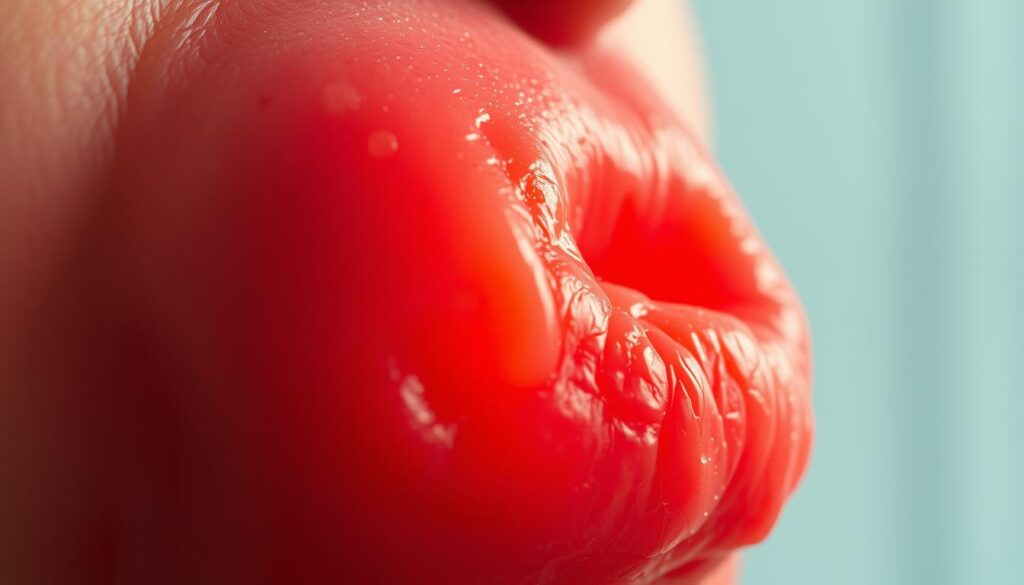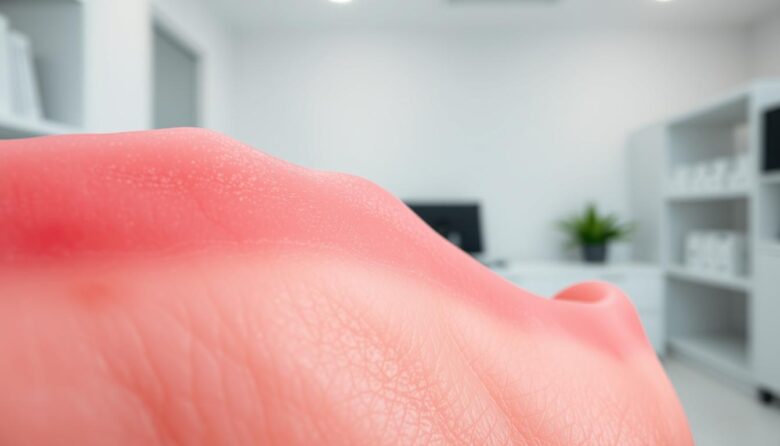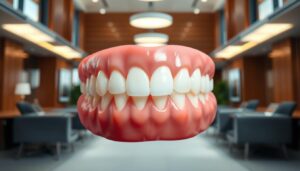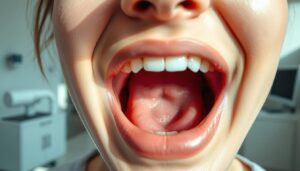A healthy smile is more than just straight teeth; it’s a reflection of overall well-being. The appearance of your gums plays a crucial role in understanding your oral health. Typically, healthy gums are pale-pink and firm to the touch. However, any shift in their natural hue can be a sign of underlying issues.
This article explores why gums may shift from pink to red or other shades. Such alterations can indicate inflammation, infection, or even systemic conditions like anemia. Ignoring these changes can lead to more serious complications.
From understanding what healthy gums look like to identifying potential causes and treatment options, this guide provides insights backed by dental professionals and research. Paying attention to your gums is a simple yet effective way to safeguard your health.
Understanding Healthy vs. Altered Gum Colors
Your oral health often starts with the state of your gums, a key indicator of overall wellness. Healthy gums are typically pale-pink, firm, and resilient to touch. This shade is a sign of good blood flow and proper oral care. They should not bleed easily and should fit snugly around your teeth.
Natural variations in gum color can occur due to melanin levels, especially in individuals with darker skin tones. These differences are normal and not a cause for concern. However, significant deviations from the pale-pink form may signal underlying issues.
Abnormal colors, such as bright red, blue, or black, can indicate inflammation, infection, or other conditions. For example, red gums often point to gingivitis, while pale gums may suggest anemia. Dark patches could result from external factors like smoking or certain medications.
It’s crucial to distinguish between natural pigmentation and pathological discoloration. Visual cues, such as unusual brightness or dark spots, should prompt a dental evaluation. Early detection of these symptoms can prevent more serious complications.
If you notice any unusual changes in your gum tissue, consult a dental professional. They can assess the reason behind the discoloration and recommend appropriate treatment. Regular check-ups are essential for maintaining healthy gums and overall oral health.
Gum Color Changes Implications for Oral Health
The state of your oral tissue can reveal much about your overall health. Subtle shifts in its appearance often serve as early warnings for underlying issues. Redness, for instance, is a common symptom of inflammation, which may indicate conditions like gingivitis or periodontal disease.

Bleeding during brushing or flossing is another sign that should not be ignored. It often points to the early stages of gum disease. If left untreated, this can progress to more severe conditions, compromising the stability of your teeth.
Identifying Signs of Inflammation and Infection
Redness in oral tissue is a primary indicator of inflammation. This color change is often accompanied by swelling and tenderness. In some cases, it may escalate to infections like trench mouth, which require immediate attention.
“Persistent redness and bleeding are not just minor annoyances; they are your body’s way of signaling a deeper issue.”
Linking Color Variations to Underlying Conditions
Certain shifts in tissue appearance are linked to systemic health problems. For example, pale tissue may suggest anemia, while dark patches could result from smoking or medications. Dental professionals often use these symptoms during routine screenings to identify potential risks.
Early detection of these signs can prevent complications. Regular visits to a dentist are essential for maintaining oral health and addressing any color changes promptly.
Common Causes of Gum Discoloration
Discoloration in oral tissue often signals more than just cosmetic concerns. It can be a cause of underlying health issues or simply a natural variation. Understanding the reason behind these shifts is essential for maintaining oral health.
Natural Pigmentation and Melanin Influence
Melanin plays a significant role in determining the shade of oral tissue. Genetic differences can lead to variations in pigmentation, which are entirely normal. For example, individuals with darker skin tones may naturally have darker gums due to higher melanin levels.
These natural variations are not a sign of disease. Instead, they reflect individual differences in melanin production. Recognizing this can help distinguish between normal pigmentation and potential health concerns.
Effects of Smoking, Medications, and Hormonal Changes
External factors can also lead to noticeable changes in oral tissue. Smoking, for instance, increases melanin production, resulting in a condition known as smoker’s melanosis. This causes the gums to appear darker than usual.
Certain medications, like minocycline, can cause hyperpigmentation. Hormonal changes during puberty, pregnancy, or menopause may also alter the color of the gums. These shifts are typically temporary but should be monitored.
While not all discoloration indicates a health issue, understanding these factors can help identify when professional evaluation is needed. Regular dental visits are crucial for addressing any concerns promptly.
Oral Diseases and Conditions Signaled by Gum Color Changes
The appearance of oral tissue can often reveal hidden health concerns. Shifts in its hue may indicate localized infections or systemic conditions. Recognizing these signs early can help prevent complications and ensure timely treatment.

Gingivitis, Trench Mouth, and Other Infections
Gingivitis is a common condition marked by inflamed, red, and bleeding tissue. It’s often caused by poor oral hygiene, allowing plaque to build up. If untreated, it can progress to more severe forms of gum disease.
Trench mouth, a severe bacterial infection, causes painful sores and a grayish film on the tissue. It’s often accompanied by pain and a foul odor. Both conditions require prompt attention to prevent further damage.
“Ignoring early symptoms like redness and bleeding can lead to irreversible damage to your oral health.”
Systemic Health Issues: Anemia and Addison’s Disease
Systemic conditions can also manifest through changes in oral tissue. Anemia, for example, often causes the tissue to appear unusually pale due to a lack of red blood cells. This is a clear sign that the body isn’t getting enough oxygen.
Addison’s disease, a hormonal disorder, can lead to hyperpigmentation, causing dark patches. While natural variations in melanin levels can also cause darker tissue, abrupt changes should not be ignored.
Regular visits to a dentist are crucial for identifying these symptoms early. Early detection can make a significant difference in managing both oral and overall health.
Treatment Options and Preventative Oral Care
Maintaining oral health involves more than just brushing and flossing; it requires attention to the condition of your gums. Addressing discoloration or inflammation early can prevent more serious issues. This section explores effective treatment options and preventative measures to keep your gums healthy.

At-Home Remedies and Herbal Interventions
Natural remedies can be a great starting point for managing mild discoloration or inflammation. Herbs like thyme, chamomile, and sage have anti-inflammatory properties that can soothe irritated tissue. These remedies are easy to incorporate into your daily routine.
- Thyme: Known for its antibacterial properties, it can help reduce swelling.
- Chamomile: Soothes irritation and promotes healing.
- Sage: Acts as a natural antiseptic, reducing the risk of infection.
While these remedies can be helpful, it’s important to consult a dentist before starting any new regimen. They can ensure the treatment aligns with your specific needs.
Professional Treatments and Cosmetic Procedures
For more persistent issues, professional treatments offer lasting solutions. Gum bleaching and laser depigmentation are two popular options. These procedures remove excess pigmentation, restoring a natural appearance.
Laser depigmentation, for example, uses advanced technology to target and remove dark spots. It’s a quick and effective treatment with minimal downtime. These methods are often more predictable than at-home solutions.
“Professional treatments not only address the cosmetic aspect but also help identify underlying causes of discoloration.”
Role of Regular Dental Check-Ups in Maintaining Gum Health
Regular visits to a dentist are essential for maintaining healthy gums. These appointments allow professionals to catch early signs of gum disease or other issues. Early detection can prevent complications and ensure timely treatment.
During a check-up, your dentist can also provide personalized advice on oral care. They may recommend specific products or lifestyle changes to address any concerns. Consistent appointments are a proactive way to safeguard your oral health.
By combining at-home remedies, professional treatments, and regular check-ups, you can maintain healthy gums and a confident smile.
Conclusion
Understanding the signals your gums send can help you stay ahead of potential health issues. Shifts in their appearance, whether due to natural pigmentation, smoking, or medications, can be early signs of underlying conditions like gingivitis or anemia. Regular dental appointments are essential for maintaining healthy gum tissue and preventing complications.
If you notice concerning changes, seek immediate advice from a dentist. Both at-home remedies and professional treatment options are available to address discoloration or inflammation. Proactive care ensures your smile stays bright and your overall health remains strong.
Don’t ignore what your gums are telling you. Schedule routine check-ups to monitor any potential concerns and take action early. Your oral health is a reflection of your well-being—keep it a priority.




